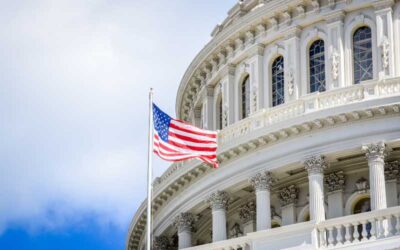Highlights Of Tax Provisions Of Recent Stimulus Legislation
The Families First Coronavirus Relief Act (FFCRA) was signed into law last week and the Coronavirus Aid, Relief, and Economic Security Act (CARES Act) was signed into law this afternoon.
These bills have significant tax provisions affecting both businesses and individuals as well as significant financial provisions affecting small businesses. The key highlights are listed below.
Delayed Due Date for Certain Tax Returns
The federal tax filing deadline has been moved to July 15, 2020 for individual, fiduciary, and corporate tax returns with an original due date of April 15, 2020. Both the return and the payment date were extended. It also includes 1st quarter estimates that were due April 15th. Second quarter estimates remain due on June 15, 2020. The delayed federal tax deadline also delayed the date for IRA and HSA contributions for 2019 to July 15, 2020.
The delayed due date does not apply to gift and estate tax returns that are due on April 15th.
Minnesota also extended their tax filing and payment deadline to July 15, 2020 for any returns with an original due date of April 15, 2020. However, Minnesota did not extend the date for their first quarter estimate, nor did they extend the filing or payment date for trust or business returns due April 15, 2020.
Families First Coronavirus Relief Act (FFCRA)
There are several tax implications from the Families First Coronavirus Relief Act (FFCRA), including a 100% tax credit for amounts paid out to employees under the FFCRA provisions for sick pay or family leave as detailed below. Please note this provision applies only to employers with 500 employees or less and there are certain other exemptions for employers with under 50 employees. This legislation was enacted on March 18, 2020 and takes effect 15 days after enactment. The bill provides the following benefits to employees:
- Employees who are on sick leave because they are sick or because of a government ordered shut-down of the business can receive their full pay, up to $511 per day for 10 days, or $5,110 total.
- Leave taken to care for children whose schools or daycares have closed is paid at two-thirds the employee’s regular rate of pay, with a maximum of $200 per day for 10 weeks, or $10,000 total.
- Employers cannot force employees to use up vacation or other sick time before receiving this benefit.
- Self-employed individuals can also receive a benefit up to the limits described above.
- There is a ten-day waiting period before this benefit applies. Employees can use existing sick or vacation time to cover these days. Employers may also have the option to temporarily furlough their employees during the ten-day waiting period.
Employers receive a tax credit on their quarterly payroll tax return for wages paid under the FFCRA in that quarter. This credit is refundable if the total wages related to the FFCRA exceed the total payroll tax liability. Employers may also short their payroll tax deposits based on the expected credit. Employers may also apply for an advance if the expected credit will be more than their total payroll tax liability.
Coronavirus Aid, Relief, and Economic Security Act (CARES Act)
Key Tax Provisions for Businesses
Paycheck Protection Loans
Businesses with fewer than 500 employees, including sole proprietors and those with self-employment income, are eligible to apply for a forgivable loan that is fully guaranteed by the federal government through December 31, 2020 and 85% guaranteed after that date. The maximum term of the loan is 10 years with a maximum rate of 4%. All payments on the loan are deferred for a minimum of 6 months and a maximum of 12 months. There are no fees to the borrower for this loan.
Eligible businesses can apply for a loan that is up to 2.5 times their average monthly payroll for the rolling 12 months ending on the date that the loan was made. The maximum amount of the loan is $10 million.
The amount to be considered when computing average monthly payroll excludes certain items and includes others.
Payroll does not include the following:
- Payroll taxes.
- Wages to any individual that are in excess of $100,000
- Wages that are reimbursed under the FFCRA (discussed above)
- Wages paid to individuals who are not residents of the United States.
Payroll does include the following:
- Wages, commissions, salary to employees or independent contractors.
- Payment for vacation or sick leave.
- Health insurance costs.
- Payment or retirement benefits.
Most importantly, the loan taken under this provision will be forgiven to the extent that it is used to pay certain expenses in the 8-week period immediately following the date of the loan. The loan forgiveness related to this loan is tax-free.
The following expenses are eligible for loan forgiveness:
- Payroll costs (the same costs as included above)
- Rent
- Mortgage Interest
- Certain Utility Payments
The amount of loan forgiveness is limited by any reduction in workforce or reduction in pay for employees making less than $100,000. The percentage of reduction is based on the average FTEs per month from 2/15/20 to 6/30/20 as compared to the average FTEs per month in the same period for 2019 or the average FTEs per month from 1/1/2020-2/29/2020. This percentage reduction does not apply if the employer eliminates the reduction in FTEs by June 30, 2020.
Employee Retention Credit
An employee retention credit is available to employers with less than 500 employees who retain employees during a period of shut-down. It is also available to employers with less than 100 employees during a period when the business sees a drop in gross receipts of greater than 50% over the same period in the prior year. This credit is not available to any employer who utilizes the paycheck protection loan described above.
Credit is available for up to 50% of the qualified wages paid to each employee during the quarter. The total credit is limited to $10,000 per employee and wages considered under the FFCRA (described above) do not qualify for this provision.
Delay of Payment of Employer Payroll Tax and Self-Employment Tax
A business or a self-employed taxpayer can defer paying the employer share of Social Security tax that would otherwise be due from the date the bill is signed until December 31, 2020. The deferred amount would be paid 50% on December 31, 2021 and 50% on December 31, 2022. For a self-employed taxpayer the “employer” share of the social security tax is half of the total self-employment tax related to social security.
This deferral is allowed for taxpayers using payroll credits under the FFCRA, discussed above; but, it is not available to any employer who utilizes the paycheck protection loan described above.
Emergency Disaster Loans
Economic Injury Disaster Loans have been expanded to include sole proprietors and ESOPS. These loans were previously only available to businesses with fewer than 500 employees. The bill also expands this program to include that loans up to $200,000 will not require a personal guarantee. A business may take a loan under this provision between January 31, 2020 and the date on which a paycheck protection loan is available. This loan is to be used for reasons other than payroll costs.
Additionally, a new emergency grant is set up to allow anyone who has applied for the loan to receive an advance of up to $10,000. The advance is not required to be repaid, even if the borrower’s request for the loan is denied.
Qualified Improvement Property
The Tax Cut & Jobs Act (TCJA) included a provision eliminating the category for “qualified improvement property” qualifying for a 15-year asset life and eligible for 100% bonus depreciation. This was a drafting error in that bill. The CARES act fixes the drafting error and restores the 15-year qualified improvement property life. This change is retroactive to 2018 and allows taxpayers to amend their 2018 or 2019 returns to take advantage of the provision.
Business Interest Expense Limitation
Under TCJA a provision was added to limit business interest to 30% of adjusted taxable income for certain taxpayers beginning in 2018. The CARES Act increases that limit to 50% for tax years 2019 and 2020.
Changes to Net Operating Loss Rules
The CARES act reinstates the ability to carry back the taxpayer’s net operating loss (NOL) for losses from 2018, 2019, and 2020. These losses can be carried back 5 years.
Additionally, losses carried to 2019 and 2020 will be permitted to offset 100% of taxable income.
Key Tax Provisions for Individuals
Individual Stimulus Payments
The IRS will issue individual stimulus payments of up to $1,200 per person, plus an additional $500 for each child under the age of 17. The payment begins to phase out starting with incomes over $75,000 (single) or $150,000 (married) and is completely phased out for taxpayers with over $99,000 (single) or $198,000 (married). There is an expanded phase-out for taxpayers with children. The IRS will use your 2018 or 2019 return to determine the payment. However, this is considered an advance payment of the credit you would be due on your 2020 return. Meaning, if your 2020 income is significantly less than your 2018 or 2019 income, you may still qualify for the payment.
Retirement Funds for Coronavirus Costs
The CARES Act provides a temporary waiver of the required minimum distribution for the tax year 2020.
The bill allows you to take money out of your qualified retirement plan for coronavirus related expenses before age 59 1/2 without paying the 10% penalty that would ordinarily be assessed.
- The maximum distribution under this provision is $100,000.
- Payments are still subject to income tax, it is only the penalty that is waived.
- Distributions qualify under this provision if the individual, their spouse, or their dependent is diagnosed with COVID-19 or if the individual experiences adverse financial consequences as a result of being quarantined, furloughed, or laid off work.
Changes to Charitable Contributions
The bill adds an above the line deduction for cash contributions of up to $300 made to certain qualifying charities.
The bill allows cash contributions for 2020 to be deducted up to 100% of the taxpayer’s AGI (rather than the 60% limit imposed under TCJA).
Have a question?
Do not hesitate to reach out to us with questions or concerns you have about taxes or your financial situation.
We are happy to help you during this challenging time.



